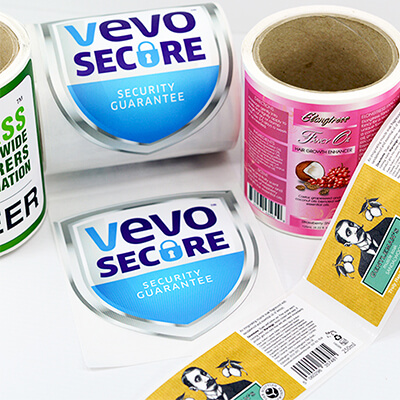Labelling is a part of branding and enables product identification. It is a printed information that is bonded to the product for recognition and provides detailed information about the product. Customers make the decision easily at the point of purchase seeing the labelling of the product.
How do you recognize certain brands and products? It is due to their specific labelling, their logo, and design. The distinct label of a product is one of its most identifiable features. Labelling is the display of label in a product. A label contains information about a product on its container, packaging, or the product itself. It also has warnings in it. For e.g. in some products, it is written that the products contain traces of nuts and shouldn’t be consumed by a person who’s allergic to nuts. The type and extent of information that must be imparted by a label are governed by the relevant safety and shipping laws.

Labeling is also an important part of the brand of the product and the company. It helps the product stand out in the market, and identifies it as a part of a particular brand. This is important in the era of high and intense competition.
Labelling is an important part of the marketing of a product. Labelling is essential as it helps to grab the attention of a customer It can be combined with packaging and can be used by marketers to encourage potential buyers to purchase the product. Packaging is also used for convenience and information transmission. Packages and labels communicate how to use, transport, recycle or dispose of the package or product.
Labelling is also used to exaggerate the product. Also, it is used for identification. This kind of labeling helps a viewer to differentiate the product from the rest in the shelves of the market. A person can find out about the ingredients of a product. This helps to spread awareness among the customers about the item they are consuming and labeling also helps to mention ingredients
Labeling is another very important factor in a product. It should show the correct information about the product. This is all the more important in products such as pharmaceuticals. Labeling should also contain information relating to whether the product has harmful chemicals, especially if it is a product that is meant for children.
In this process, a clear film is applied to the label material, giving it a polished appearance. Lamination is mostly done to protect the label, and the label is rendered moisture-resistant and practically tear-proof, thus increasing the life of the label. Lamination also enhances the label's visual appeal.
Varnishing refers to the process of applying a heat-cured clear coating of transparent ink on the surface of a label for protection and for giving it lustrous look.
The labels with a varnishing enhancement protect the material and the printing from abrasion, sunlight, chemicals and moisture.
Labeling with unique serial numbers is required in various industries, such as retail and logistics, as well as for several purposes, such as identifying spare parts and individual units of goods and products.
This is a special image-producing method in which a thin foil with the label design is transferred on to the required surface.
This results in an eye-catching product, because of the metallic sheen of the foils. Popular foils used are gold and metallic, but several colours and finishes are available at JK Labels. Hot/Cold foil can be done on any surface, and is the perfect enhancement if you want your product to appear exquisite. JK Labels lets you choose what you want to include in the hot stamp- logo, text or design.
Embossing is a condition where an image is pressed onto a material to create an image that is raised above the level of the material.
Embossing is not only a cost-effective option, especially for low volumes, but also adds a dash of class to your product. It is also easy to detect any tampering of embossed labels, thus discouraging counterfeiting. We ensure that our labels are last long, and are available to customers in the shape, pattern, size and colour they require.
Bar coding is a method for easy identification of products or units, using a specific pattern comprising spaces and lines (bars) of varying width. The bar code represents alpha or alphanumeric data in machine readable form. Bar coding makes replication and forgery harder, and is easy to validate. JK Labels provides bar coded labels for a variety of industries.
Holograms have unique optical properties that make them almost impossible to replicate. They can be easily authenticated by customers and users. Our holograms not only will secure your products from counterfeiting and diversion, but they also look stylish, and complement your existing packaging.
This is a process in which fine dots are used to create a variation in which the colour seems to fade from the base colour to a lighter-shaded version of a base color.
This process is usually done to add texture to a label. It gives a very elegant feel to a label. We are one of few label printers in Qatar who are capable of screen printing on labels.
We provide our customers with a choice of more than 20 security/specialty inks in different colours and print processes and guide them which ink they should use depending on the level of security, brand protection, and attractiveness they are looking for.
Few of the popular security/specialty inks are thermo chronic inks, metallic inks, optically variable inks and photo chromatic inks.